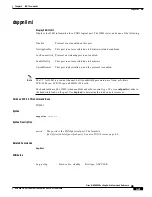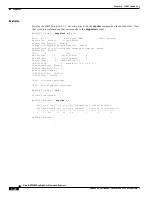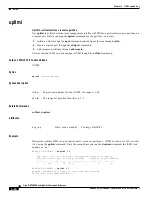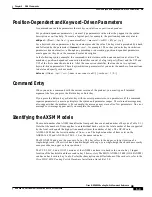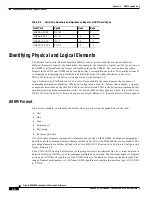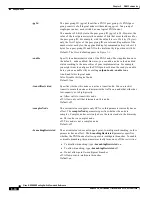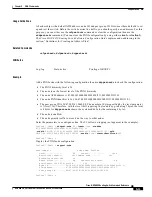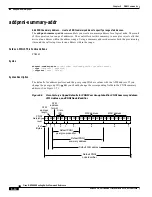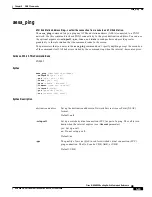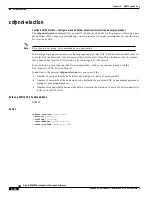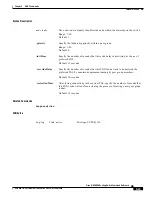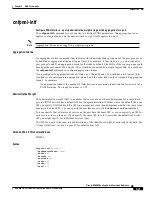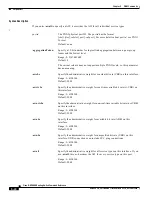
5-9
Cisco MGX 8850 Routing Switch Command Reference
Release 2.0, Part Number 78-10467-04 Rev C0, October 2001
Chapter 5
PNNI Commands
addpnni-node
Syntax Description
level
The level specifies the level of the node in a PNNI hierarchy and does so
by indicating the number of valid bits for a node ID (-nodeId parameter)
or peer group ID (-pg-id parameter). In the current release, you can
configure only one level. The level must be the same within the network.
The maximum number of levels you can configure on a switch 10. This
limit is meaningful only in a multi-peer group. Although the level can any
value, selecting an 8-bit boundary makes network planning and address
management easier. Four example, using 56 for a level is more expedient
than using a level of 59.
Range: 1–104 bits
Default = 56 bits
lowest | other
Indicates whether the logical node you are adding is the lowest node in the
hierarchy or exists at a level other than the lowest. Type the entire word
“lowest” or “other.”In the current release, you can specify only a
single-peer group, so any node you add must be the lowest. In this case, this
parameter must remain the default of “lowest.”
If you are adding the node at the lowest level of the switch, you must also
specify -atmAdd atm-address.
Default: lowest
-atmAddr
The ATM address of a PNNI logical node consists of 20 hexadecimal, 8-bit
bytes (2 hexadecimal characters per byte).
If you are adding the lowest node in the switch, you must include an ATM
address. For all levels above the lowest level, this ATM address is
meaningless. The current release supports only a single peer group, so you
must specify an ATM address for the one time that you execute
addpnni-node. The first byte of atm-address indicates the address plan.
For example, 47 is reserved for NSAP ICD, as in the following example:
47.00918100000000309409f1f1.00309409f1f1.01
Default:
Figure 5-1
shows the Cisco default.
-nodeId
The PNNI logical node identifier (node ID). The node-id consists of the
following logical elements, starting at the most significant byte:
•
The level of the PNNI node within the hierarchy. (See the description
of the level parameter.)
•
The number of bits in the ATM address. The number is 160 for an
NSAP address because the ATM address of the node is always 20
bytes. For an E.164 address, this field is decimal 15.
•
The ATM address portion of the peer group ID (20 8-bit, hexadecimal
bytes—2 hexadecimal characters per byte).
Default: The Cisco default appears in
Figure 5-1
.

